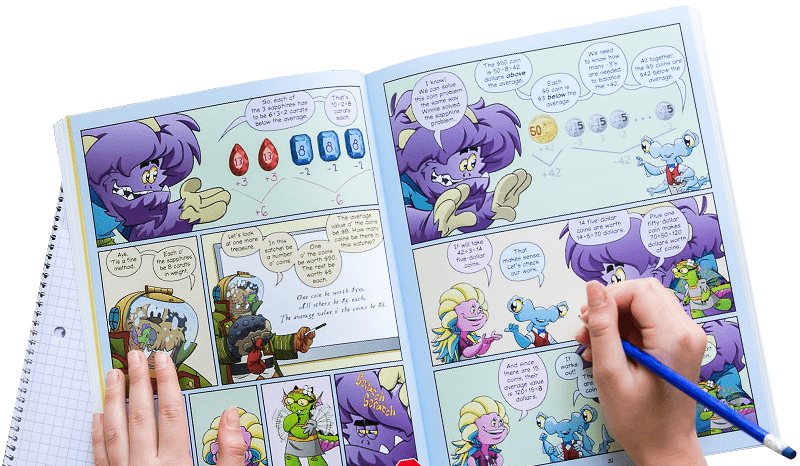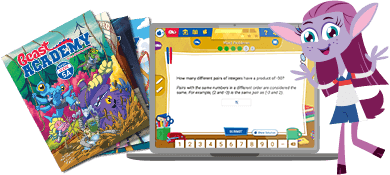Square Flexagon
Cut and fold to make your own magically "flexing" polygon, a classic favorite of math beasts.
Instructions
Once you've made your first flexagon, the next one will be easier. And there will be more! They're fun! Kids 7 or older may be able to fold and cut their own by following along with you. Younger children may just help you with certain folds or creases as you make a flexagon with them, and they'll certainly help decorate. Start by making a square from a piece of paper. Fold a short edge over and line it up with a long edge.

Then cut off the extra strip to make a square.


Now fold the square of paper in half. Then fold it in half again.


Fold these back and forth, and crease well. (This will make your flexagon a lot easier to "flex" later!) Then fold your square in half the other way, and fold it in half again. Remember to fold back and forth and to crease. The creases from these folds should divide your square into 16 smaller squares.

Next, cut out the center four squares, leaving only the 12 squares on the outside.


Fold the left side in, then the top, then the right side.



Folding the bottom side in is a bit trickier. It may take a few tries. Fold up the right side of the bottom, then tuck in the bottom left corner. We are trying to fold up the bottom as if it were folded before the left side, so that none of the folds are actually on top of each other.

The result is a bit like a pinwheel, or like the flaps of a cardboard box's lid, folded over each other so that none of them is completely "on top."

Ta-daa! Your flexagon is complete! Now what? To appreciate this little creation, it helps to number the "faces" this flexagon has. A "face" is the part you can see, made up of four little squares. Start by writing a 1 on each square.

Now "flex" your flexagon to reveal a new face. First fold it in half. Then unfold it from the crease you just folded along. This takes some practice! (Watching our video may help, too.) From this position, with the 1's showing, you can flex your flexagon vertically or horizontally. As blank faces are revealed, number them. All together, there will be 6 blank faces, though it can be a bit tricky to find all of them!





For more about how to fold the flexagon to see every face, and about flexagons in general, see Learning Notes below.
Now it's time to decorate! See Variations below for ideas.

Don't forget: it's Beast Academy Playground, not Beast Academy Study Hall. Change the rules, be silly, make mistakes, and try again. The Variations and Learning Notes are here for you if you want to dive deeper, but not all of them apply to learners of every age. The most important thing is to have fun.
What do you think of this activity?
We're always looking to improve. Submit your feedback to us below.
- paper
- scissors
- markers
- wonder
- shapes
- MP4
- K.CC.A.3
- K.CC.B.4
- K.CC.B.5
- K.G.A.1
- K.G.A.2
- 2.G.A.2

Ready to level up?
Keep problem solving with Beast Academy’s full math curriculum for students ages 6–13. Check out our captivating comic book series and immersive online platform.
LEARN MOREBring problem-solving to your classroom
Keep your entire class engaged with a full book and online math curriculum, for students ages 6–13. 98% of teachers say they’re satisfied with Beast Academy.
LEARN MORE



Ready to level up?
Keep problem solving with Beast Academy’s full math curriculum for students ages 6–13. Check out our captivating comic book series and immersive online platform.
LEARN MOREBring problem-solving to your classroom
Keep your entire class engaged with a full book and online math curriculum, for students ages 6–13. 98% of teachers say they’re satisfied with Beast Academy.
LEARN MORE
Sign up to be notified when new videos are released.















































